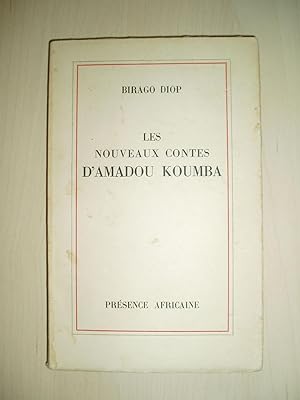diop birago 1906 1989 (1 résultats)
Type d'article
- Tous les types d'articles
- Livres (1)
- Magazines & Périodiques
- Bandes dessinées
- Partitions de musique
- Art, Affiches et Gravures
- Photographies
- Cartes
-
Manuscrits &
Papiers anciens
Etat
- Tous
- Neuf
- Ancien ou d'occasion
Reliure
- Toutes
- Couverture rigide
- Couverture souple
Particularités
- Edition originale
- Signé
- Jaquette
- Avec images
- Sans impression à la demande
Pays
Evaluation du vendeur
-
Les nouveaux contes d'Amadou-Koumba
Edité par Présence Africaine (1958), Paris, 1958
Vendeur : Expatriate Bookshop of Denmark, Svendborg, Danemark
orig.wrappers. 18x12cm, 173,(2) pp., Rubbed. Spine stained. With a preface by Léopold Sédar Senghor. Author's second book. ["Birago Diop was a Senegalese poet and story-teller,whose work restored the general interest in African folktales and promoted him into one of the most outstanding African francophone writers. A renowned veterinarian, diplomat and leading voice of the Négritude literary movement, Diop exemplified the "African renaissance man"., During his time in France as a veterinary student, Birago met numerous African, African American and Caribbean Students, one of whom was Léopold Sédar Senghor, who later became Senegal's first president after its independence. Inspired by these young black intellectuals, artists and poets, Diop drafted his earliest poems in L'étudiant noir (the black student)- a student review that established the idea of the Négritude movement which protested against the assimilation theory in favor of African cultural values. During his work as the head of the government's cattle-inspection service for several regions in Senegal and Mali, he was introduced to several fascinating tribal folktales, most of which he committed to memory. These served as the main inspiration for much of his literary work. Indeed, most of his poems and tales have their roots in oral African traditions. Generally recited to a group at night by a professional teller, called a griot, folktales were repeated in several different places by the people who heard them. These ceremonies commonly consisted of songs and dances in addition to these folktales.,." - wikipedia]. Several pages bear inked notes & underlinings. Just Good.


